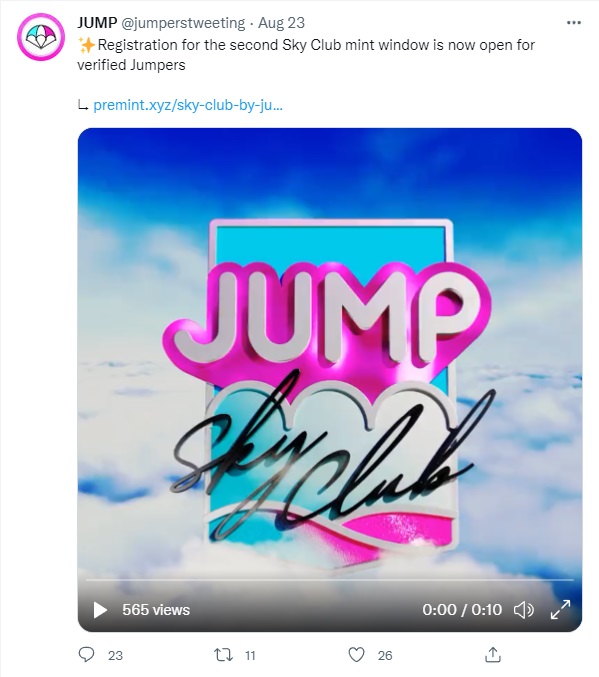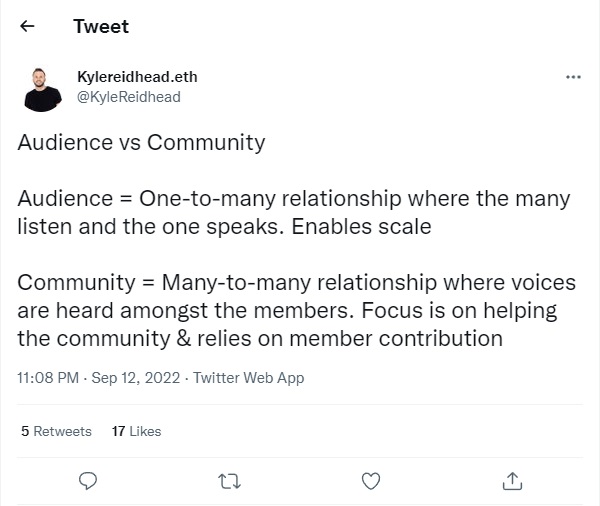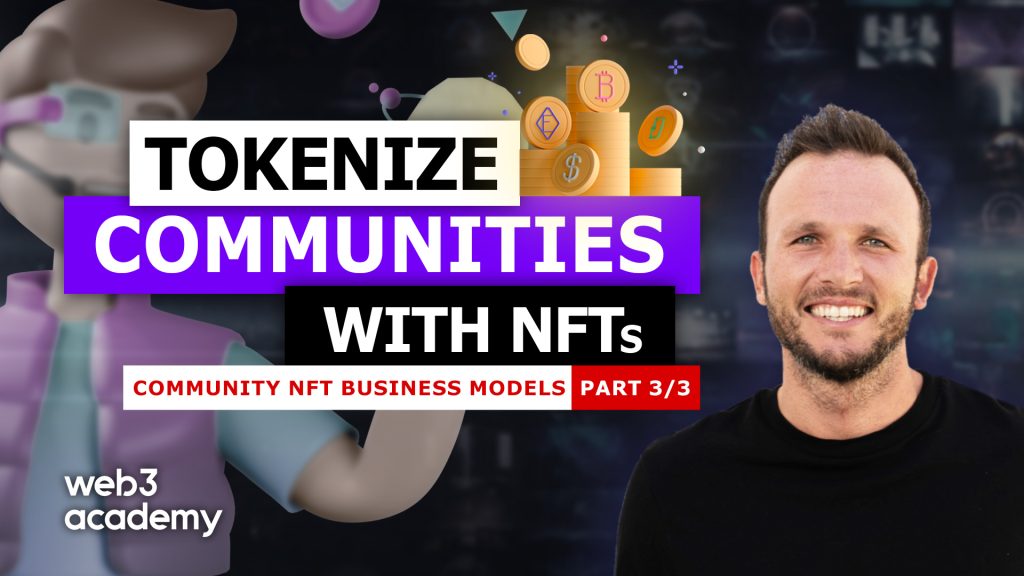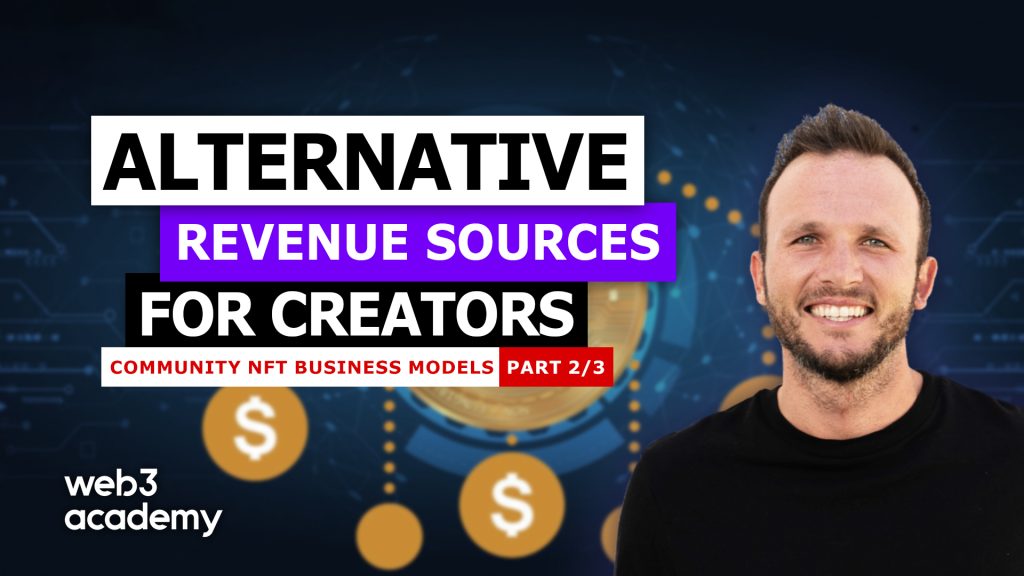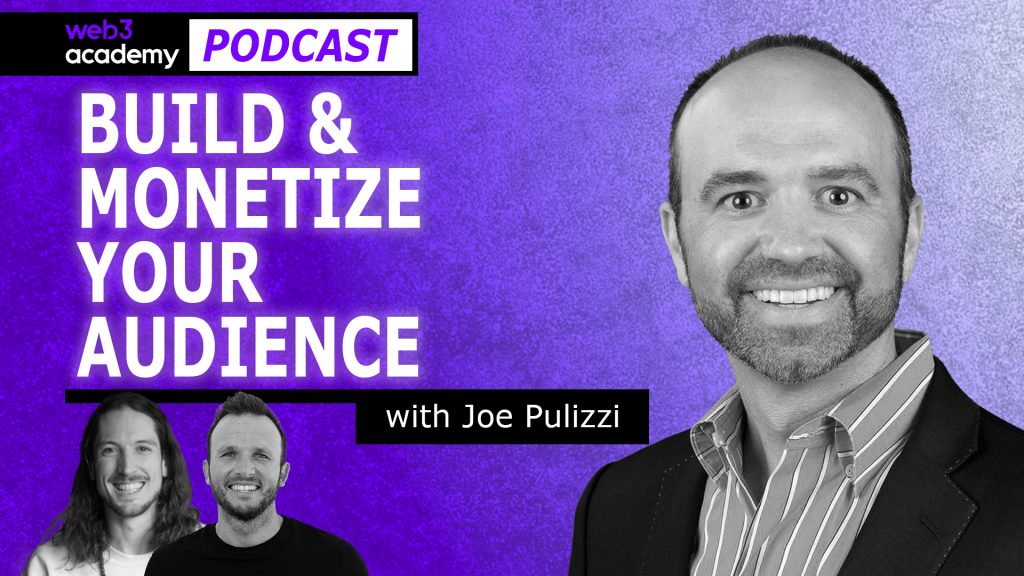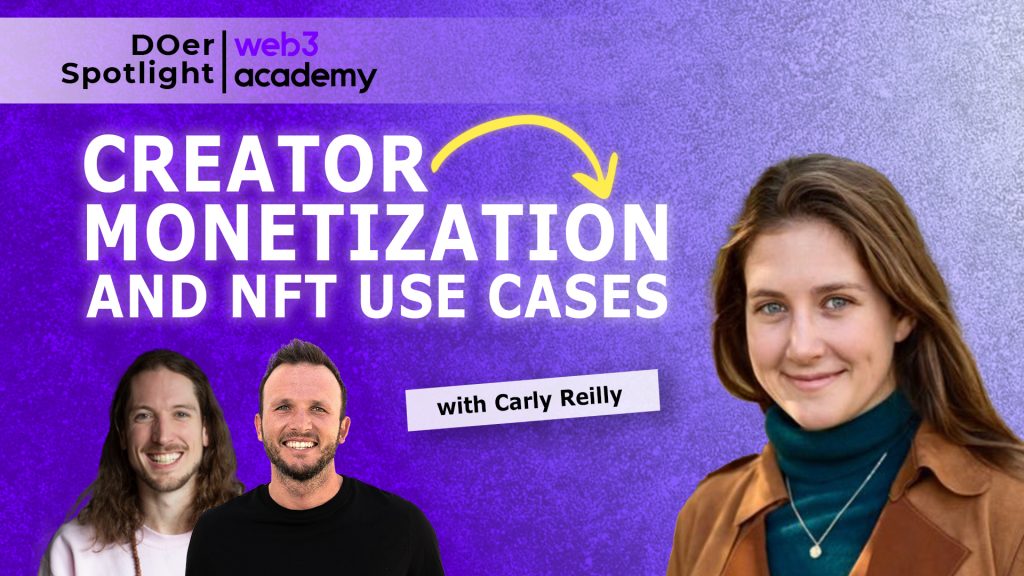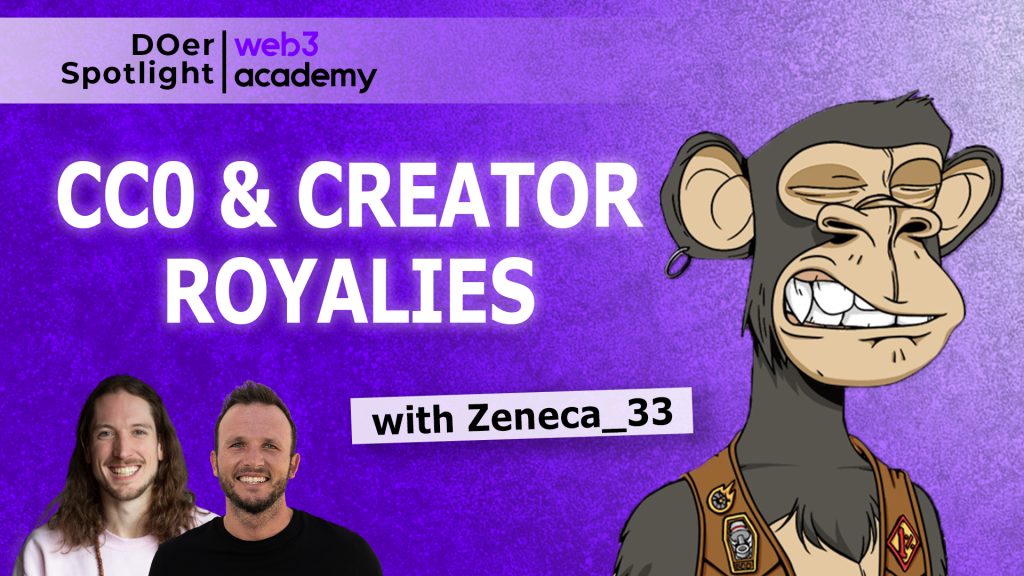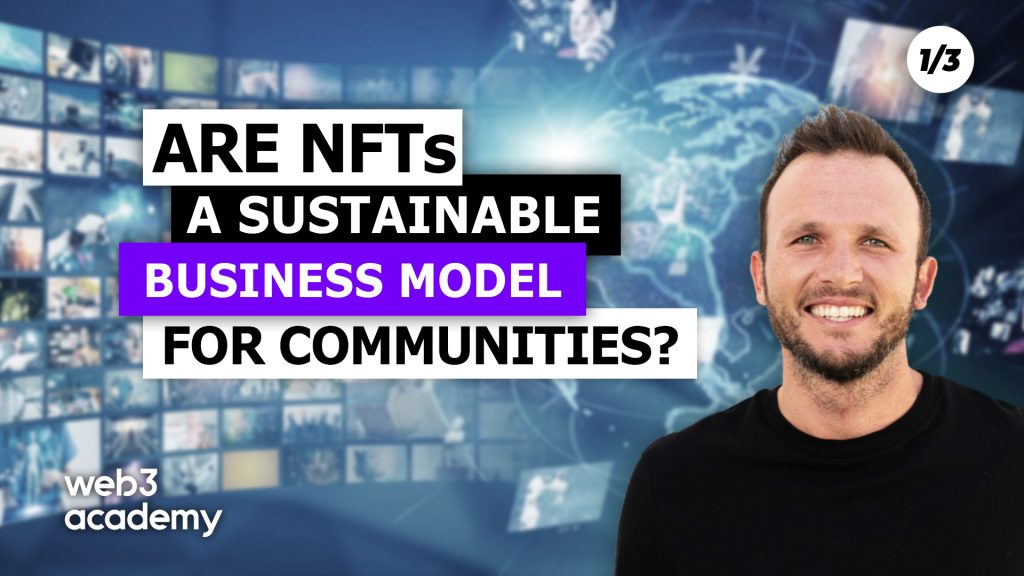
Are NFTs a Sustainable Business Model for Creators Tokenizing Communities? | PART 1 of 3
In Part 1 of This Series, We Look at the Current State of Monetizing Communities in Web2 and Web3
Watch or listen to all of our content on your
favourite platform 🎧

TOKENIZING WEB3 COMMUNITIES
GM frens!
10,000 token holders.
That’s the goal of most web3 communities so far right?
To be clear, 10,000 is an arbitrary number. It can be any number.
What I mean here is that creators with audiences have been tokenizing communities by launching NFT collections (usually 10,000) to form an active and exclusive circle.
A new web3 type of product which isn’t possible in the web2 world.
Usually these NFTs are in the form of a PFP (profile picture), like Bored Ape Yacht Club (BAYC) or Moonbirds.
But it’s not necessary. Creators, like Zen Academy and Jump, went without the PFP, simply using the NFT as an access token.
Regardless of the image, I continue to wonder if using a collection of NFTs is a sustainable business model for creators building audiences and communities.
The reason for tokenizing a community seems pretty exciting at first glance: Use NFTs to provide ownership and a share in the community’s value with your members (customers), turning your passive audience into active contributors.
Rather than build alone, this new primitive enables you to build together as a community and share in the upside.
But I’m not sold on the fact that this is a good move for most creators. After mint, how do creators continue to earn revenue? What if your community doesn’t end up building with you… or they’re unsuccessful?
This new model seems a bit risky.
In fact, we asked Zeneca from Zen Academy (an NFT thought leader) on the Web3 Academy podcast this same question and he was unsure of how sustainable the NFT model is himself.
That’s why I’m going deep with this series of articles. I want to think through this topic and write the playbook on a sustainable business model for tokenizing communities—if that even exists.
There are 2 main questions I want to answer:
- What’s the sustainable business model for creators who want to tokenize their existing audience or community with NFTs? To be clear, I’m talking about content creators who establish an audience or community in a specific niche (Think the Bankless of DeFi, the Tim Ferris of productivity, or the Tony Robbins of self-development).
- Does tokenizing your community make sense if your token holders don’t also build something which generates revenue and real value?
Buckle up friends, we’re going deep on this one. 🤿
The Current NFT Community Playbook in Web3
The current NFT community playbook is a three step process:
- Launch an NFT collection to your audience or existing community.
- Provide access to a token-gated social platform (i.e. Discord).
- Potentially attach some other forms of value along with it (exclusive events, premium content, discounts, merch, etc.).
From an initial revenue standpoint, it seems that many collections over the last 2 years were able to generate some fairly large sums of money on launch.
- Zen Academy raised $1.2 million from the sold out genesis collection and $1.5 million from the 333 Club collection as of November 2021.
- Moonbirds raised $66 million on mint, crossing 100,000 ETH on secondary trading volume not long after.
- VeeFriends raised $51 million in the first week with an extra $40 million from secondary sales.
But it’s yet to be seen if these types of numbers will continue or if that was simply a byproduct of the NFT speculative mania of 2021 (I’m leaning towards the latter).
Regardless, the next step is deciding what creators will do with the initial funds from their NFT mint.
The way I see it, creators have 3 options:
- They can take those funds as profits for their past effort of building the audience or community.
- They can use the funds to build something of value for the NFT holders (i.e. a metaverse, game, movie, etc.)
- They can share the profits with their token holders by funding a treasury so the community can use it to build something together.
It’s also possible to choose a combination of the three. But again, this assumes that you earn a large sum of money at launch.
More importantly, I keep wondering what happens afterwards? How does the business continue to generate revenue after launch?
- Is the idea to rely on NFT royalties?
- Do you need to launch a second token?
- Do you incorporate the web2 way of monetizing community via memberships and subscriptions?
Or is the idea that, after launch, the creator who built the audience and started the community is no longer earning additional revenue? In this model they’ve essentially seeded their business over to their token holders to create products or services together, which in turn generates revenue and increases the value of the initial NFT.
I’ve spent the better part of 10 years monetizing digital audiences and communities in web2 so I’m struggling to see how the existing web3 playbook provides a better business model for creators…
…unless your community builds something of extreme value. But I think people are underestimating how difficult that is, especially with a group of strangers!
Just so we’re all on the same page, let’s start this deep dive looking into how we’ve monetized audiences and communities in web2.
Then we’ll break down potential monetization strategies for tokenized communities in web3.

👉 Before we dive in, though. Do you think NFT royalties are a sustainable revenue source for communities?
🚀 Reply to this email with Yes or No and let us know.
The Playbook To Monetize Digital Communities In Web2
In the web2 world, we’ve created sustainable, scalable, and extremely profitable business models around communities via memberships and subscriptions.
This business has been booming for years and is showing no signs of slowing down. Web3 may even take this industry to a whole new level… we’ll see. 👀
The web2 playbook is fairly simple:
- Build an audience through social or other media platforms (newsletter, podcast, etc.)
- Convert the true fans of that audience into a paywalled subscription product (private community, premium newsletter, paywalled application, etc.)
- Charge a monthly or yearly recurring fee for customers to remain part of the product and community.
So long as you provide enough value in your paywalled product, your customers tend to stick around with a high retention rate, and your business will continue to grow.
The beautiful thing about this business model is that there’s little additional work or cost required for each new paying customer—aside from a marginal increase in customer support and SaaS fees to run your product.
Whether you have 100 customers or 10,000, the work and costs increase much slower than revenue does.
So you can see why so many creators choose this route.
Creators monetizing digital communities can earn 10s, 100s, and even millions of dollars per month with this model. So long as they continue to remain relevant, produce valuable content, and innovate, this continues to grow over time.
From a customer standpoint, this scalability enables subscription costs to be quite minimal, with most subscriptions ranging between $7 – $50/month or $70 – $500/year (though it’s not unusual to see $100+/month or $1000+/year too).
An important point to make here is that this product borders on the line of monetizing an audience versus an actual community.
This type of product relies heavily on the creator to continue creating and providing value. In return, you continue to reap the benefits and take 100% of the profit.
The problem here is that you’re not truly tapping into the power and potential of your community.
But if you try getting your community to build a product or service that furthers your mission while you continue to take 100% of the profit, you’ll fall flat.
There’s no incentive for your community to contribute rather than simply consume.
This is what web3 unlocks. Using NFTs or fungible tokens to provide ownership to your community immediately converts them into an active contributor.
This is where the magic of web3 happens. 🪄
But how does the creator do this without simply giving away their existing business and all of their hard-earned work to the community?
How can you empower and incentivize the community while still holding on to what you’ve built?
Is it possible or are we trying to, as the saying goes, “have our cake and eat it too”?
Let’s not forget that after launching the NFT the creator still needs to move forward with business as usual and continue to create content.
Just because you launched an NFT doesn’t mean that all of a sudden 10,000 people will know exactly what to do and how to take your business to the next level. In fact, it’s more likely the complete opposite is true!
Before we get into the advantages and disadvantages associated with working with such a large community, let’s start with exploring the ways in which the original creator could tokenize their community while continuing to earn their own revenue.
Then we will address whether it’s better to just give it all away or share that revenue with your community.
The Current Business Models of NFT Tokenized Communities
The playbook for monetizing communities via NFTs is fairly similar to how we do it in web2.
The main difference here being that we remove the membership model and exchange it for a one-time purchase of an NFT to access the community.
In this model, history has shown it’s possible to earn a large sum of money upfront at launch. But, if you sold all of the NFTs in your collection at launch, the question then becomes how do you generate future revenue for the business?
Some might say NFT royalties from secondary sales. But this model seems counterintuitive to the mission of building a successful community.
The entire purpose of building community is to create strong connections and relationships around a specific group of people. The better the community you build, the less likely your community members are going to sell their NFTs and thus less revenue earned on royalties.
So this model doesn’t seem to make sense.
That said, some NFT communities have earned a considerable amount of revenue on royalties over the last few years—for example, the Yuga Labs ecosystem royalties pictured below.
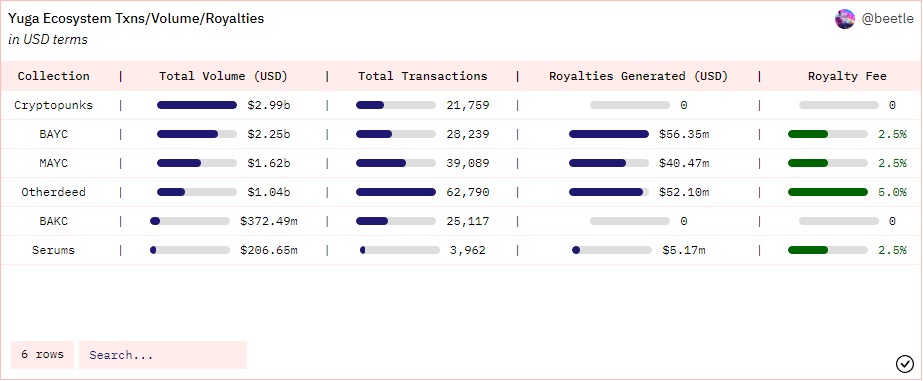
But again, I question if this is just a by-product of the speculative NFT mania of 2021 or if this will continue long term.
Not to mention that NFT royalties may not be a viable solution as you can easily circumvent them. You can learn more about this in our article on The Truth About NFT Royalties.
But let’s assume for a second that NFT royalties are enforceable.
NFT Royalties As a Business Model For Tokenized Communities
Let’s say you have an audience of 100,000 people and you launch a 10,000 NFT collection to them which sells out at .1 ETH each (let’s assume ETH is at $2,000 USD so you made $200 USD/NFT).
You earned a total of 1,000 ETH ($200,000 USD) at launch and now you’re planning to take 7.5% of every NFT sale moving forward—7.5% is at the higher end of take rate here by the way. If your NFT remains at $200 you will earn $15 per sale.
So to earn $1,000/month from a 10,000 person community you would need 67 sales/month or a 0.67% monthly turnover rate (turnover rate = the number of members leaving your community and selling their NFT vs the total community members).
To earn $10,000/month you would need 667 sales a month or a 6.7% monthly turnover rate.
In comparison with the web2 subscription model mentioned above, we typically see a monthly turnover rate (customers cancelling their membership) range from 3% for a great product to 10%+ for a decent product.
However, as mentioned this model is more monetizing an audience than a community. With a community we should expect a much lower turnover rate as connections should be stronger, and ownership and incentives via NFTs create stickiness.
So the real way to increase revenue here is to increase the value of the NFT itself. If the NFT appreciates to $2,000 rather than $200 for example, then you’re earning $150/NFT sale rather than $15.
At a 0.67% monthly turnover rate you just raised your monthly revenue from $1,000 to $10,000 while maintaining a low turnover rate (an indicator that you have a great product).
What this shows is that an entrepreneur can pull two levers to grow their revenues:
- They can provide more value to the community, making the existing audience more interested in purchasing an NFT and increasing the NFTs price.
- They can increase their audience size (people who might buy one of their NFTs). More demand with the same supply typically means “number go up”. Everyone has a price they are willing to sell at, so this assumes that, as the price goes up, certain people will be willing to sell their NFT even if they didn’t want to previously.
The next question is what happens if you reach a point where you provide so much value, build the strongest and most loyal community, and no one wants to sell?
The result would be you likely hold an extremely valuable NFT, similar to a cryptopunk or BAYC, but what happens to your royalties?
Well let’s say your NFT appreciates to $20,000 or even $200,000. You would be earning $1,500 or $15,000 per sale.
To put things into context, in the last 30 days BAYC has had 161 sales in total. If we use these sales numbers with the royalty amounts above, you’d be earning between $241k to $2.4 million per month.
We’re making a lot of assumptions here, so it’s unlikely that this is exactly how it plays out. Not to mention, it’s extremely difficult to increase the value of your NFT to these levels. Currently, out of the millions of NFT collections in web3, only 280 have a floor price above 1 ETH.
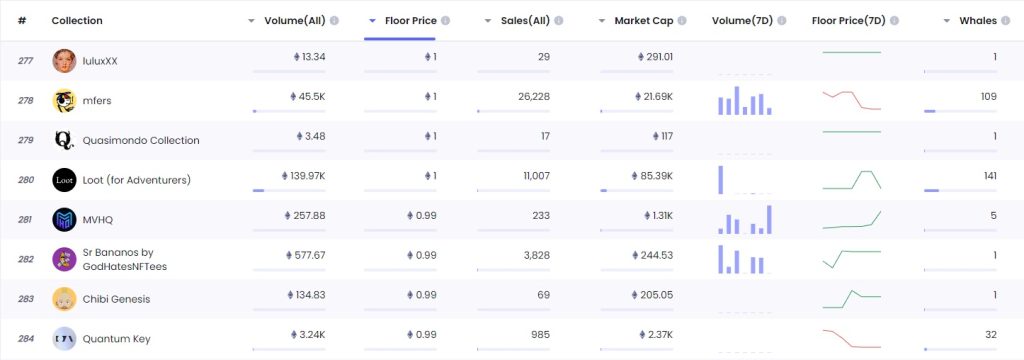
And at these prices you’re limiting community access to a smaller subset of wealthy individuals.
For the most part, this business model doesn’t sit well with me. Here’s a quick summary of the pros and cons:
Pros:
- Potential to generate a large sum of money at launch (for fundraising or to cover the opportunity loss of recurring membership).
- Your community is incentivized to help you build and generate value to the NFT (in the web2 playbook your community is not incentivized to build with you).
Cons:
- Your revenue stream relies on people leaving your community so the incentives between you and your community are not aligned.
- For this to be worth it, your “product” (aka NFT) needs to appreciate in price to a point that will exclude most of your community.
- NFT royalties can be circumvented, meaning it’s not an ideal revenue stream for your business to rely on.
Alternative Business Models For Creators With NFT Tokenized Communities
NFT royalties are only one means whereby a creator can earn additional revenue when tokenizing their community.
I would recommend that if you use (or plan to use) royalties, then treat them as “gravy” for the business rather than reliable revenue for a sustainable business model.
Thankfully, there are other options that we’ll explore in the next article of this series. And yes, they’re more promising as a business model for tokenizing communities than what we covered today.
These additional models will allow you to earn your fair share, while also aligning incentives with the community and enabling them to share the upside with you.
In the next articles, we will also discuss the practicality and sustainability of building with your tokenized community.
Thanks for reading frens!
👉 If you enjoyed this edition, check out our next installment, Community NFT Business Models Part 2: Alternative Revenue Sources for Creators 👀
ABOUT THE AUTHOR
Kyle Reidhead
Founder of Web3 Academy & Impact Digital Marketing
Find him: Twitter

FOR THE DOERS
Take Action & Level Up
LEARN
Take our FREE Web3 Rabbit Hole Course to get up-to-speed on the foundational components of Web3 so you can confidently build, work, or use the fastest growing technology in history.
FOLLOW
Web3 Academy on Twitter.
READ
Learn about The Truth of NFT Royalties.

LEVEL UP WITH WEB3 ACADEMY
Subscribe: Apple Podcast | Spotify | Youtube
Follow: Twitter | TikTok | Instagram | Facebook

REPLY TO TODAY’S EMAIL
👉 Do you think NFT royalties are a sustainable revenue source for communities?
🚀 Reply to this email with Yes or No and let us know.




